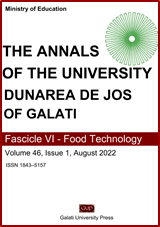Improvement of the red wines quality by using yeast derivatives as an alternative to lees aging
Abstract
The macromolecules originating from yeast play an essential function in the colloidal equilibrium of wines. For several years now, mannoproteins from alcoholic fermentation and yeast autolysis have been studied to improve tartaric balance and stabilize red wine color and phenolic compounds. Thus, a commercial yeast derivatives product was applied (30 g/hL) during maceration, compared with the traditional wines aging on the lees, to evaluate the influence of treatment during alcoholic fermentation on wine's chromatic and sensory characteristics after 3 and 6 months of aging. The yeast derivatives product enhanced the structure and volume of red wines during maturation and reduced the feeling of dryness, attenuating tannins with aggressive structure. The addition of yeast derivatives enriched the red wine in colloids and nitrogen compounds (amino acids, peptides, low molecular weight proteins) during the fermentation, significantly improving the sensory profile and protein stability. From a sensorial point of view, the wine treated with yeast derivatives was more equilibrated, having expressive characteristics such as roundness and fullness. Overall compared to traditional aging on lees, the commercial treatment was more stable, eliminating the risk of unwanted sensory deviations such as hydrogen sulfide odors.


